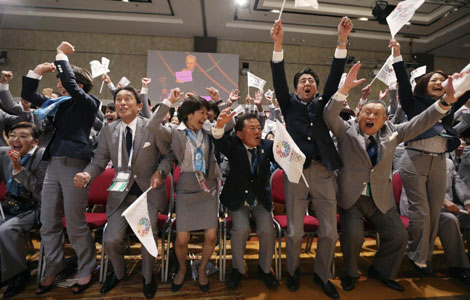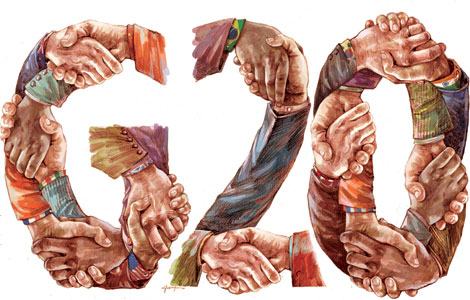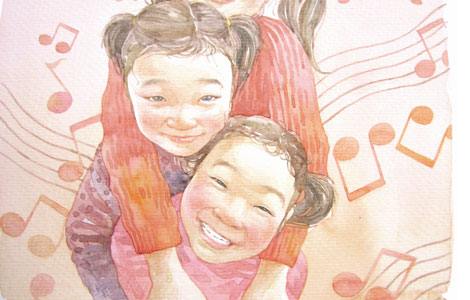Japan looking to regain its cool
Updated: 2013-09-09 17:37
By Cai Hong (China Daily)
|
||||||||

Focus on youth culture as country aims to follow China's soft power push
"I hate you, but I still like you."
In this way, Hiroshi Murayama, a columnist for Japan's Nihon Keizai Shimbun newspaper, compared the Sino-Japanese relationship to that of two lovers.
The subtleties of the relationship are visible here and there.
A survey by Japan Foundation found that 1.05 million Chinese learned Japanese last year, up 27 percent from 2009. They were the largest group studying Japanese outside Japan.
Japanese pop culture such as manga books, songs and TV sitcoms have taken Chinese universities by storm. Young Chinese want a command of the language.
The finding seems a surprise, given that China and Japan have been at odds since September last year when the Japanese government illegally "nationalized" China's Diaoyu Islands, although it's likely the figures largely reflect the situation before the event.
Meanwhile, however, Chinese tourists have been avoiding Japan, despite Prime Minister Shinzo Abe's policy toward depreciation of the yen to encouraged foreign visitors. The number of Chinese visitors decreased by more than 27 percent year-on-year in May, according to Japan's Kyodo News Agency.
Japan's cultural influence has expanded internationally despite the economic and political problems of the "lost decades". Now it wants to build a national brand that packs everything from Japan's anime and manga imagery to fashion, style, pop music and food.
Following the example of, and competing with, China's worldwide Confucius Institutes, Japanese experts have called on the government to promote the Japanese language in other countries. The approach is seen as a way to enhance Japan's presence in the international community. Japan is planning a huge investment in the project.
A panel of experts for Japan's Foreign Ministry has come up with a way to make it easier for young people abroad to learn Japanese. Japan will spend millions of dollars on the project and send many teachers to foreign countries. From Japan's perspective, the more foreigners speak its language, the more they will understand and support the country.
Part of the justification for the project is the declining interest in Japanese in countries such as South Korea, Britain and Canada. Meanwhile, more foreign students are picking Chinese as their second foreign language.
The project is part of the country's Cool Japan strategy. In 2002, US journalist Douglas McGray famously calculated "Japan's Gross National Cool" and woke the country to the potential of capitalizing on the global infatuation with its anime, games, manga and pop music.
Elated by the international attention, Japan's bureaucrats and CEOs reformulated the concept into a Cool Japan marketing campaign that would reach new consumers and add soft power to Japan's manufacturing achievements.
In June, Japan's upper house approved a Cool Japan fund of 50 billion yen ($509 million) over the next 20 years, with a target of 60 billion yen through private investor partnerships.
Just this year, questions were raised about why Japan is not competitive in selling its television shows in Asia, a market overwhelmingly controlled by South Korea and, to some extent, China. As a result, Japan's Ministry of Economy, Trade and Industry set up a Creative Industries Promotion Office to coordinate efforts aimed at increasing cultural exports.
Japan is setting its eyes on young people overseas who are wild about Japan's amine, films and video games. The government will appoint 150 fans from Europe and Southeast Asia as its "overseas ambassadors" and invite them to tour Japan in October. The job description for these ambassadors is to put in a good word for Japan on social networking tools like Facebook.
The cultural promotion program is supposed to help Japan build its brand power and draw in more tourists and students from abroad.
Roland Kelts, author of Japanamerica: How Japanese Pop Culture has Invaded the US, claimed in Time magazine that there is both political and economic impetus for getting the Cool Japan project right. The Japanese government's new funding for it is unprecedented in size and hoopla. But he thinks Cool Japan may be a little too cool — he sees a disconnection between the people who make manga and anime and the people who consume it.
Japan's Nihon Keizai Shimbun warned that Japan should not simply seek to boost exports from certain companies, industries or regions. Japan needs to promote a wide range of goods that can win hearts and minds around the world, it said.
These words should be thought provoking to Japanese policymakers. A recent survey found that 92.8 percent of Chinese had an unfavorable opinion of Japan, although China has the largest Japanese-learning population outside Japan.
The author is China Daily’s Tokyo bureau chief. Contact the writer at caihong@chinadaily.com.cn.

 Chinese fleet visits Pearl Harbor in Hawaii
Chinese fleet visits Pearl Harbor in Hawaii
 US: Proven link of Assad to gas attack lacking
US: Proven link of Assad to gas attack lacking
 Serena Williams repeats as US Open champion
Serena Williams repeats as US Open champion
 Panda 'Bai Yun' celebrates 22nd birthday in US
Panda 'Bai Yun' celebrates 22nd birthday in US
 Exports expand in Aug amid signs of recovery
Exports expand in Aug amid signs of recovery
 Rodman back from DPRK without jailed American
Rodman back from DPRK without jailed American
 National Games: Pictures of the day
National Games: Pictures of the day
 Abe speech helps secure 2020 Games for Tokyo
Abe speech helps secure 2020 Games for Tokyo
Most Viewed
Editor's Picks

|

|

|

|

|

|
Today's Top News
Shanghai FTZ 15% corporate tax rate rumor denied
DPRK leader has a baby daughter: Rodman
US: Proven link of Assad to gas attack lacking
Li: China pursues sustainable growth
Trending news across China
China-US military ties deepen
Inflation slows to 2.6% in August
Chinese president arrives in Uzbekistan for visit
US Weekly

|

|






